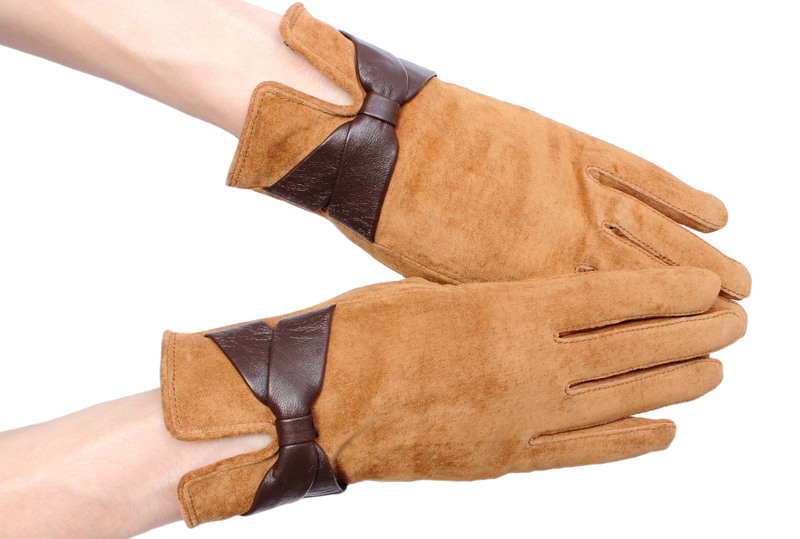Unveiling the Truth: Leather Sofas and Steam Cleaning
Posted on 01/10/2025
Unveiling the Truth: Leather Sofas and Steam Cleaning
Leather sofas are a timeless piece of furniture, cherished for their luxurious look, comfort, and durability. However, when the time comes to clean these investment pieces, the question often arises: "Can you safely steam clean a leather sofa?" In this detailed guide, let's pull back the curtain on the facts, myths, and best-practice recommendations regarding leather sofas and steam cleaning.

Understanding Leather Sofas: Types and Their Characteristics
Before diving into the practicality and implications of steam cleaning, it's crucial to understand the nature of leather as a material. Not all leather is created equal, and different types react differently to cleaning methods.
Main Types of Leather Used in Sofas
- Full-Grain Leather: The highest quality, minimally processed and retains natural grain. It's durable, develops a patina, but is more porous.
- Top-Grain Leather: Slightly sanded to remove imperfections, more uniform in appearance yet still genuine and luxurious.
- Split-Grain Leather: Made from the fibrous part of the hide, less expensive, and less durable but can still look attractive.
- Bonded Leather: Made from leftover scraps, bonded with adhesives, and often given a polyurethane coating.
- Faux or "Vegan" Leather: Made from synthetic materials; care instructions differ from authentic leather.
Understanding your sofa's leather type is the first step in choosing appropriate cleaning methods. Steam cleaning may pose significant risks, especially for natural, untreated leathers.
Steam Cleaning: What Does It Involve?
Steam cleaning involves using high temperature steam to clean and sanitize surfaces. It's widely employed for carpets and other fabric upholstered furniture due to its ability to remove dirt, bacteria, and allergens without harsh chemicals. But when it comes to leather sofas, the story is quite different.
Pros of Steam Cleaning
- Sanitization: Kills bacteria, dust mites, and other pathogens.
- Chemical-free: Only water is used, making it an eco-friendly option.
- Spot Cleaning: Good for specific, non-porous surfaces.
Cons of Steam Cleaning for Leather Sofas
- Moisture Damage: Leather is porous and absorbs moisture. Excess moisture can lead to swelling, warping, cracking, or loss of shape.
- Heat Sensitivity: High heat can damage the natural oils in leather, making it stiff and brittle.
- Stain Risks: Steam can push stains deeper into the material or cause dye transfer.
- Not Suitable for All Leathers: Especially dangerous for aniline, full-grain, or untreated leathers.
Leather Sofas and Steam Cleaning: Common Myths Debunked
With companies marketing advanced steam cleaners and social media DIYs going viral, many myths about steam cleaning leather sofas have emerged. Let's clarify the facts:
-
Myth 1: Steam Cleaning is Safe for All Leather Sofas
Reality: Not all leather sofas can be safely steam cleaned. Untreated and natural leathers, such as aniline and full-grain, are highly susceptible to moisture and heat damage. -
Myth 2: Steam Cleaning Restores Leather's Shine
Reality: Steam cleaning can actually strip away the natural oils and finishes that give leather its luster, leading to a dull appearance. -
Myth 3: Steam Kills All Bacteria Without Risk
Reality: While steam does sanitize, excessive moisture and heat can ruin leather's texture and structure, outweighing the potential hygienic benefits. -
Myth 4: Making Leather Wet is Not Harmful
Reality: Leather and excessive water do not mix. Moisture can encourage mold, mildew, and cause irreversible damage.
Official Recommendations: What Do Leather Experts Say?
Most leather furniture manufacturers and professional upholstery cleaning organizations caution against using steam cleaners directly on leather. Here's why:
- Modern steam cleaners may claim to be versatile, but even a short burst of hot steam can change the very structure of leather fibers.
- The seams and natural creases of leather sofas can trap moisture, amplifying the risk of internal mold growth or rot.
- Warranty and care instructions for most leather sofas explicitly advise against any kind of wet cleaning unless otherwise stated.
Always check your sofa's care label or manufacturer guidelines before considering any cleaning process. If steam cleaning is not specifically permitted, it's best to avoid it.
Best Practices for Cleaning Leather Sofas
If steam cleaning is risky, how should you properly maintain your leather sofas? Here are the best practices that keep your investment beautiful and lasting:
1. Routine Cleaning
- Use a soft, dry microfiber cloth to remove dust and debris weekly.
- Wipe with a slightly damp (never wet) cloth for stubborn spots. Always dry immediately after.
2. Using Leather-Specific Cleaners and Conditioners
- Choose a pH-balanced leather cleaner specifically formulated for your type of sofa.
- Test new cleaners on a hidden area before full application.
- After cleaning, always apply a quality leather conditioner to restore lost oils and maintain suppleness and shine.
3. Attend to Spills Immediately
- Blot--don't rub--spills with a dry, absorbent cloth.
- Avoid hot water or household detergents that can stain or dry leather.
4. Professional Cleaning
- Consider a professional leather cleaning service every 12-24 months, depending on usage.
- Professionals understand how to balance moisture, cleaning agents, and conditioning for each unique leather type.
5. Prevention is the Best Cure
- Keep leather sofas out of direct sunlight to avoid fading or cracking.
- Position away from heat vents and fireplaces to prevent drying out.
- Encourage family and guests to avoid sitting with items that can scratch or stain the leather.
Are There Safe Alternatives to Steam Cleaning Leather Sofas?
If you're looking for deep cleaning results without the risk of steam, consider these safe alternatives:
Enzymatic Cleaners
Some specialized enzymatic cleaners are designed to break down organic stains, odors, and dirt without oversaturating leather. Always test first!
Foaming Leather Cleaners
These produce minimal moisture and gently lift dirt and grime from the surface, making them a preferable choice for delicate leathers.
Professional Conditioning Treatments
Conditioning treatments not only clean but also replenish the leather's natural oils, preventing cracks and maintaining suppleness.
Vacuum and Dry Cloth Combo
- Use a soft-bristle vacuum attachment to remove debris from seams and crevices.
- Follow up with a dry microfiber cloth to polish and shine.
Remember: Avoid wet washes and always keep moisture to a minimum!
How to Spot Clean Your Leather Sofa Without Steam
If you've got a tough stain but want to avoid the risks of steam cleaning your leather sofa, consider the following steps:
- Blot the stain with a dry, absorbent cloth. Don't rub!
- Mix a small amount of mild soap (like baby shampoo) with distilled water.
- Dampen (not soak) a clean cloth in the mixture and gently wipe the stain.
- Wipe with another clean, damp cloth to remove soap residue.
- Dry immediately with a soft towel and apply conditioner to the area.
Tip: For oil-based stains, sprinkle a little cornstarch or baking soda, let sit for a few hours, then brush off carefully.
The Risks of DIY Steam Cleaning Machines
It's tempting to try a handheld steam cleaner for quick fixes, but DIY machines pose unique dangers to leather sofa longevity:
- Temperature control becomes difficult-- Too much heat can warp or discolor leather.
- Excess pressure can force moisture deep into seams and under the surface.
- Lack of product-specific knowledge increases the risk of irreversible damage.
- Voiding your sofa's warranty-- Manufacturers typically exclude damage from moisture-based cleaning.

The Science Behind Leather Damage from Steam
Leather is composed of natural fibers and a matrix of proteins and oils. When high-temperature steam penetrates these fibers, the following can occur:
- Denaturation: Proteins in the leather may break down, weakening structure.
- Oils Evaporate: Natural oils that keep leather flexible are lost, leaving the sofa dry and prone to cracks.
- Fiber Swelling: Water absorption swells the fibers, which can cause stretching, warping, or deformation.
- Color Bleeding: Moisture and heat can destabilize dyes, causing colors to run or fade.
Conclusion: Should You Steam Clean Your Leather Sofa?
Unveiling the truth--steam cleaning and leather sofas are not a perfect match. The risks far outweigh the pros. For the majority of leather sofas, avoid steam cleaning and use proper, leather-specific products and gentle techniques instead.
If deep cleaning is needed, call a professional with experience in leather care. Your sofa will last longer, look better, and continue to provide the comfort and style you expect from quality leather furniture.
Remember These Key Takeaways:
- Identify your sofa's leather type before any cleaning process.
- Avoid steam cleaning unless the manufacturer specifically recommends it.
- Use cleaning and conditioning products designed for leather.
- Blot spills immediately, and handle stains with care.
- Protect your leather sofa from direct sunlight and heat.
- Consult professionals for major stains or periodic deep cleaning.
When it comes to leather sofa cleaning, gentle, regular care is the golden rule. With the right routine and attention, your leather sofa can remain a stunning centerpiece for years without ever needing the harsh touch of steam.




